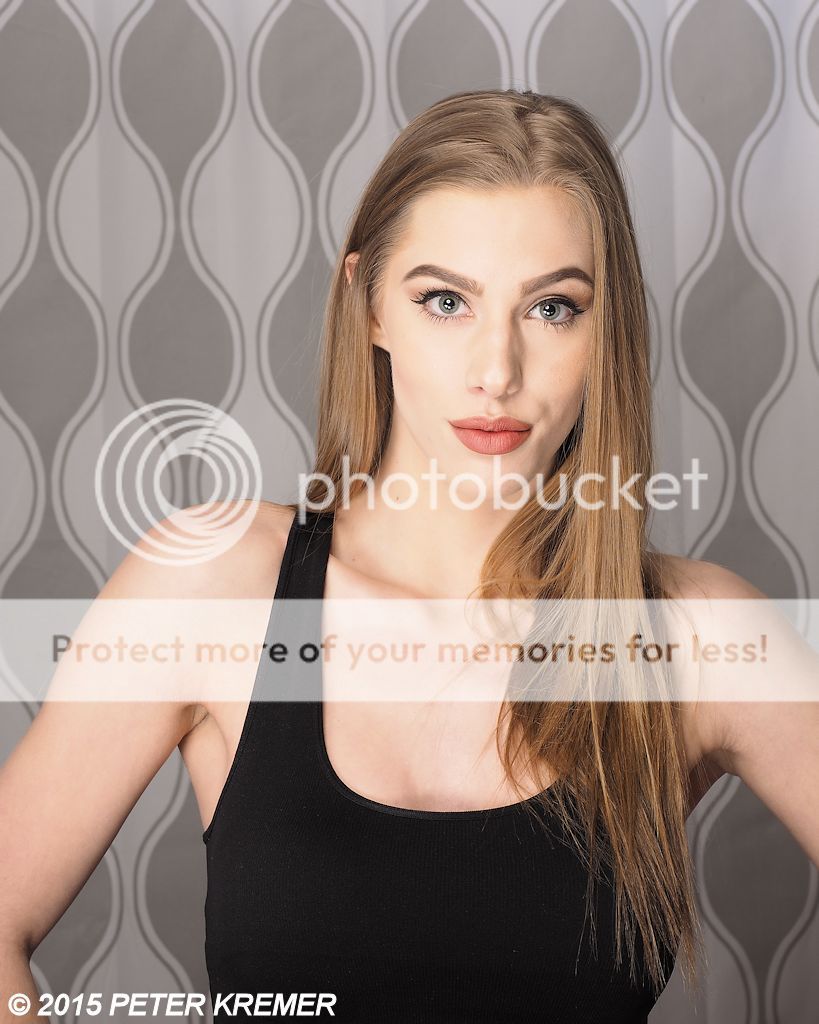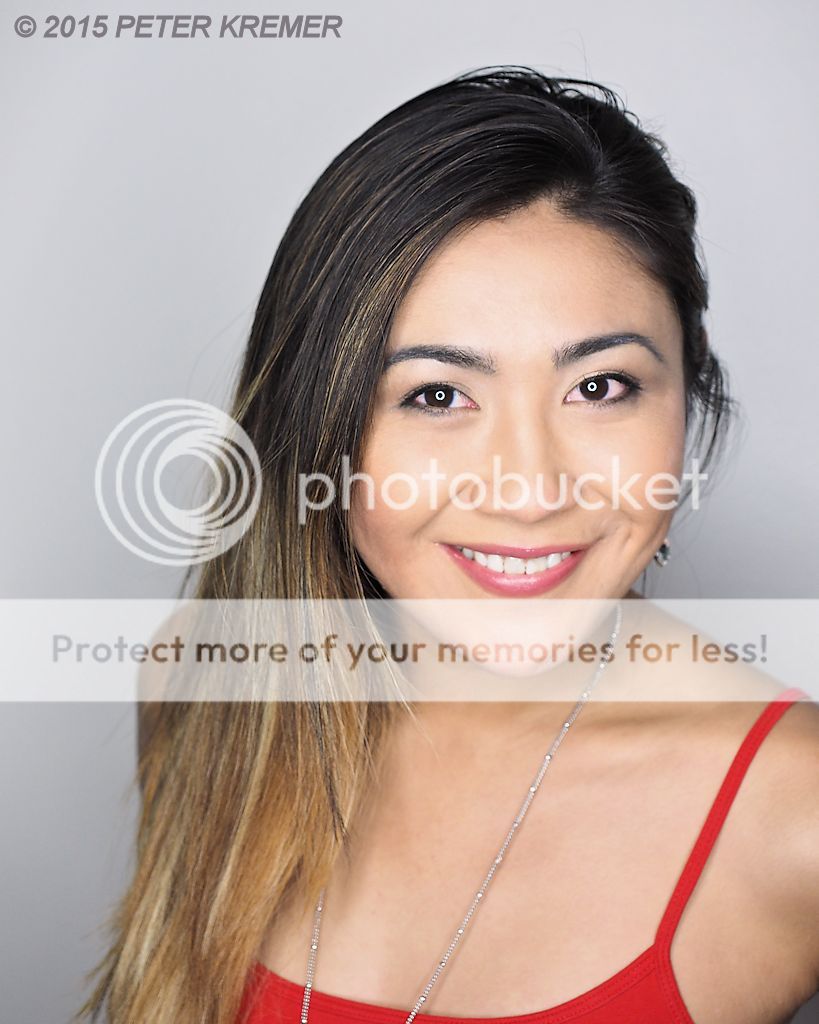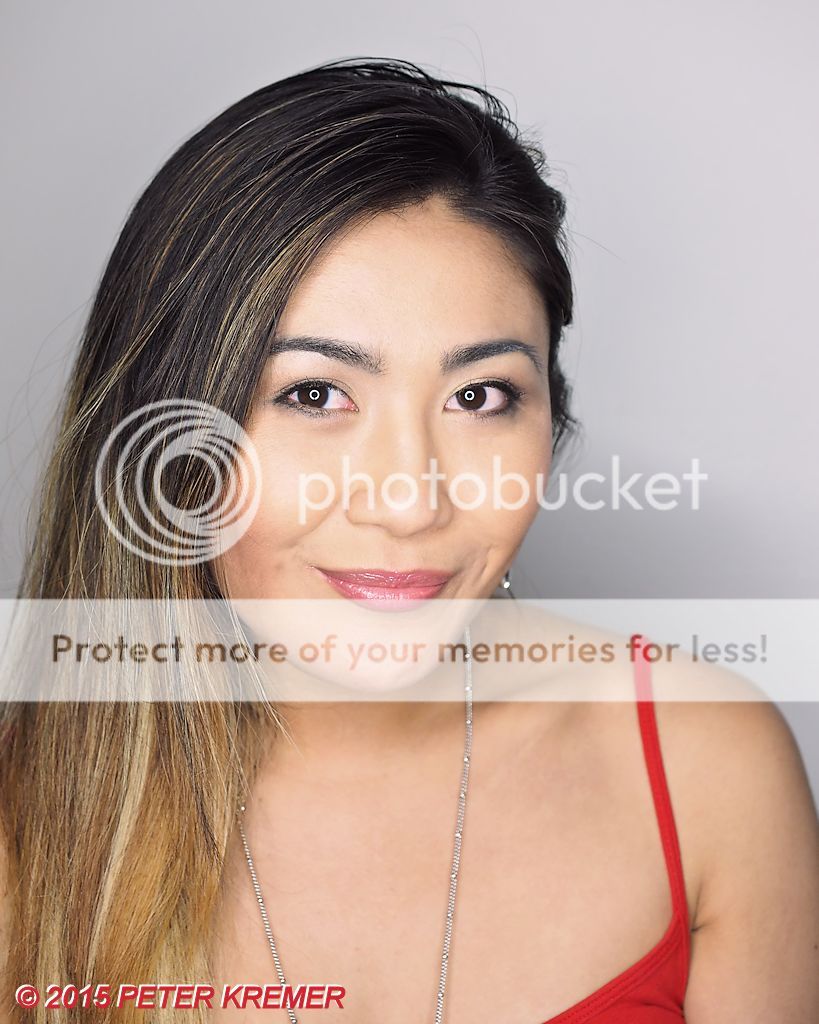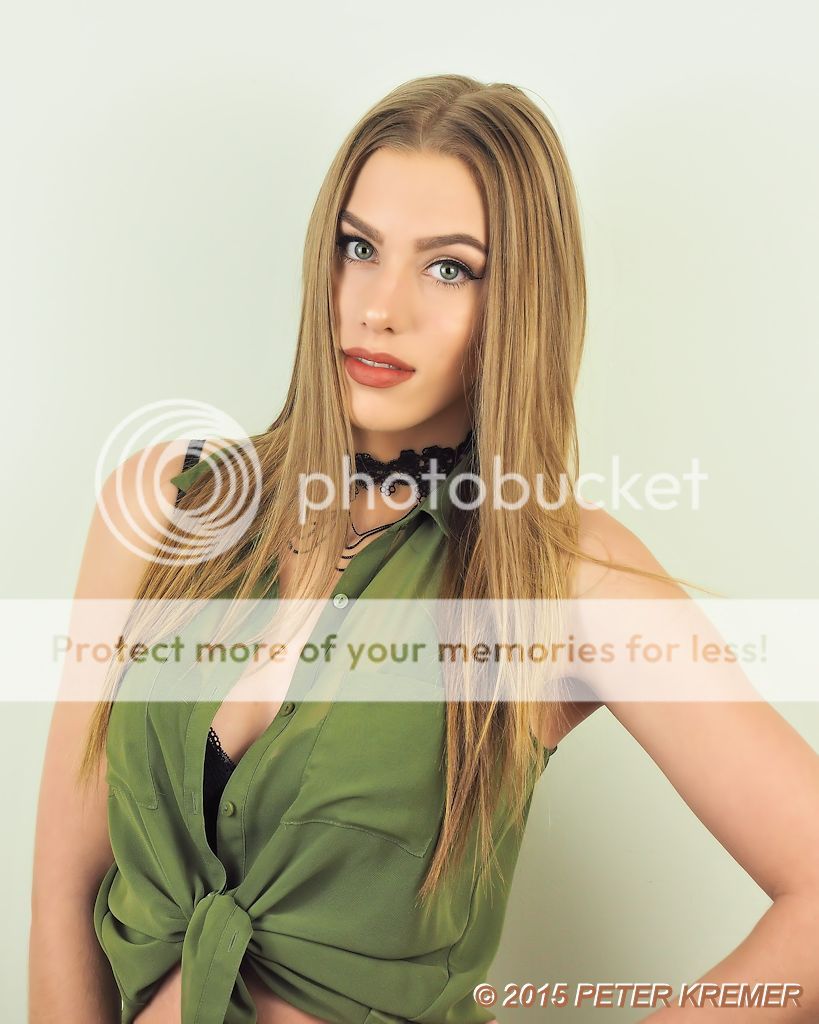... and I still have all of the lenses to use on my E-M1.
I have used my E-M1 with a Fotasy adapter and the Hexanon AR 50mm F/1.7 lens for portraits. The lens has less contrast and sharpness than my 12-40/2.8 and of course it is more difficult to nail focus on a live subject. My percentage of dead-on razor sharp images is less with this manual focus lens so I find myself reaching for the 12-40 @ 40mm for portraits. I am still considering getting either the 45/1.8 or the Panny 42.5/1.7 for this purpose.
The AR 50/1.7 was considered one of the very sharpest normal lenses made by any manufacturer back in the day. The split image focus ring on my Konicas made precise focusing easier with these MF lenses. This focus screen isn't available on the E-M1 as you know which adds to the difficulty of focusing quickly on any subject that isn't perfectly still. The models are use to setting a relatively quick shot-to-shot pace with AF lenses.
Here is an image of the same model taken with each lens. The comparison isn't totally fair however. The model is posing for me with the 12-40 image and is lit by a beauty dish with 3 reflectors under her. I'm standing off to the side with the 50/1.7 image and she is lit with a ring light. The catch lights in her eyes shows both lighting arrangements.
Both images got a WB tweek, blemish removal, capture and output sharpening (12-40 sharpening was less aggressive) and a crop in post. The 50/1.7 image also got NR, skin smoothing, scratch removal, clarity and a saturation boost in addition. The 12-40 image had a smidgen of contrast added.
So different lighting and different processing. I don't remember what aperture I used with the Hexanon but it doesn't look like I stopped down as much.
The bottomline is the lens can work for you but I think you'll eventually be happier with a native AF portrait lens when you can get one.
Here's the images downsized to 1024 on the long end:
E-M! + Hexanon AR 50mm F1.7
E-M1 + 12-40mm F/2.8
--
'When nothing seems to help, I go and look at a stonecutter hammering away at
his rock perhaps a hundred times without as much as a crack showing in it.
Yet at the hundred and first blow it will split in two,
and I know it was not that blow that did it,
but all that had gone before.'
-- Jacob Riis (1849 - 1914)
Stay Well,
Pete K.














